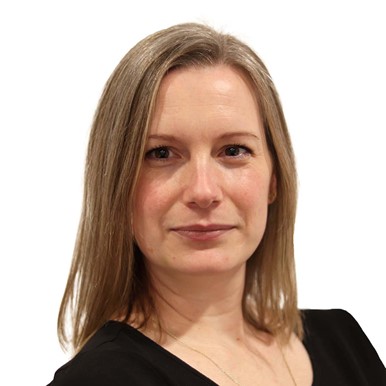Project
NIRAS participates in international research project on sustainable cities of the future

Photo: Nanjing University
Project
Photo: Nanjing University
An international research project with four leading universities from Sweden and China will together with NIRAS create a framework for integrating sustainable mobility hubs into the urban space. Together with new mobility solutions, the built environment plays a central part in creating the future’s liveable cities.
NIRAS is part of the international research project called Transit Oriented Development 2 (TOD2). This research project will develop urban planning methods to support urban public transport systems and create better urban spaces.
The project contains several innovative measures to validate the influence of the visual environment, the street network, and variables from urban activities on parameters such as particle pollution, CO2 emission and public transport.
“TOD2 puts people at the center of urban design, creating safe, human-scaled streets that make cities more livable. By developing a framework for these transit areas and sustainable mobility hubs, we will help communities to shift from car dependence to walking, biking, and transit—improving both quality of life and environmental impact,” says Mary Elbech, project manager and senior mobility consultant.
She will participate in TOD2 in cooperation with her colleagues from NIRAS, along with leading researchers from Nanjing University and Tongji University from China, as well as with researchers from Stockholm University and KTH Royal Institute of Technology in Sweden. In addition, the Danish startup, UrbanDigital, participates in the project.
“TOD2 puts people at the center of urban design, creating safe, human-scaled streets that make cities more livable. By developing a framework for these transit areas and sustainable mobility hubs, we will help communities to shift from car dependence to walking, biking, and transit—improving both quality of life and environmental impact.”
Mary Elbech, project manager and senior mobility consultant at NIRAS.
“The world's cities have changed at breakneck speed in recent decades. With this project, we will find the solutions that can ensure that the cities of the future have holistic, sustainable mobility solutions that meet both the mobility needs of the citizens, but also the urgent need to reduce the climate burden from our cities," says Gunvor Riber Uggerhøj.
says Gunvor Riber Uggerhøj, senior consultant in sustainable mobility at NIRAS.
“China's rapid urban development has made it a global leader in testing and evaluating innovative mobility solutions. Despite differences in transport systems and scale, our project research reveals universal patterns in how people interact with public space. This, combined with China’s remarkable adaptability, provides valuable insights that can expand our understanding and inform the way we approach mobility hubs here in Denmark,” says Mary Elbech.
TOD, an acronym for Transit-Oriented Development, is a term that has been used since the 1990s and focuses on urban planning centred around public transport mobility hubs. The goal of the TOD2 research project is to produce an updated version of principles for transit-oriented development. The transport sector accounts for a third of the world's total climate burden, and it is absolutely central to include transport in the solution to the climate crisis, especially the transport in our cities.
Many European and Chinese neighbourhoods are designed specifically for individual mobility and today are dominated by private cars and excessive automobile travel.
Therefore, the TOD2 project will particularly focus on how changes in new urban development and existing urban planning can contribute to making it easy, safe and flexible to make a more sustainable transport choice.
"Based on the researchers’ results we hope to be able to initiate strategic changes to urban spaces in order to make them more sustainable on all parameters. Internationally, there is a need to reduce the use of cars, especially in the big cities. The public transport hubs must contribute to this development, and they must become focal points for sustainable cities," explains Gunvor Riber Uggerhøj, senior consultant in sustainable mobility at NIRAS.
The universities will carry out state-of-the-art research into how urban mobility hubs can become climate neutral.
Together with UrbanDigital, NIRAS will create strategies for how the research results can be applied into the urban and transport planning context in our cities.
“The world's cities have changed at breakneck speed in recent decades. With this project, we will find the solutions that can ensure that the cities of the future have holistic, sustainable mobility solutions that meet both the mobility needs of the citizens, but also the urgent need to reduce the climate burden from our cities," says Gunvor Riber Uggerhøj.
Project partners from China, Sweden, and across Denmark got together for a 1 week in-person workshop in August 2024. Hosted by NIRAS, the week included site visits in Copenhagen to the case study stations, meetings at BLOXHUB with guest lectures from DTU, a tour of Aarhus led by the City of Aarhus, and a visit to the School of Architecture.
Project partners are planning a workshop to China in June 2025.
NIRAS will host a TOD2 conference in Copenhagen on 4 September 2025.
The TOD2 project is carried out with support from JPI Urban Europe, and NIRAS' share is financed by Innovationsfonden (The Danish Innovation Foundation) and the NIRAS Alectia Foundation.
The project is carried out in collaboration between NIRAS, UrbanDigital, KTH Royal Institute of Technology, Stockholm University, Nanjing University and Tongji University. KTH Stockholm and Nanjing University lead the project. The project has a total budget of 1.3 million euros, and will start on May 1, 2023, and have a duration of three years.


